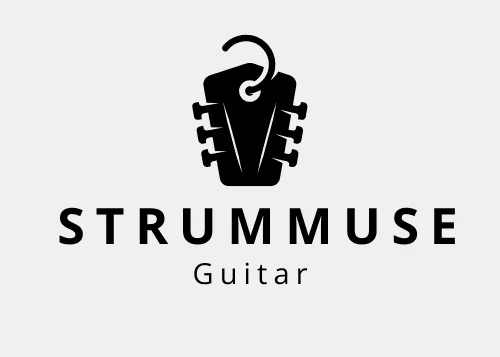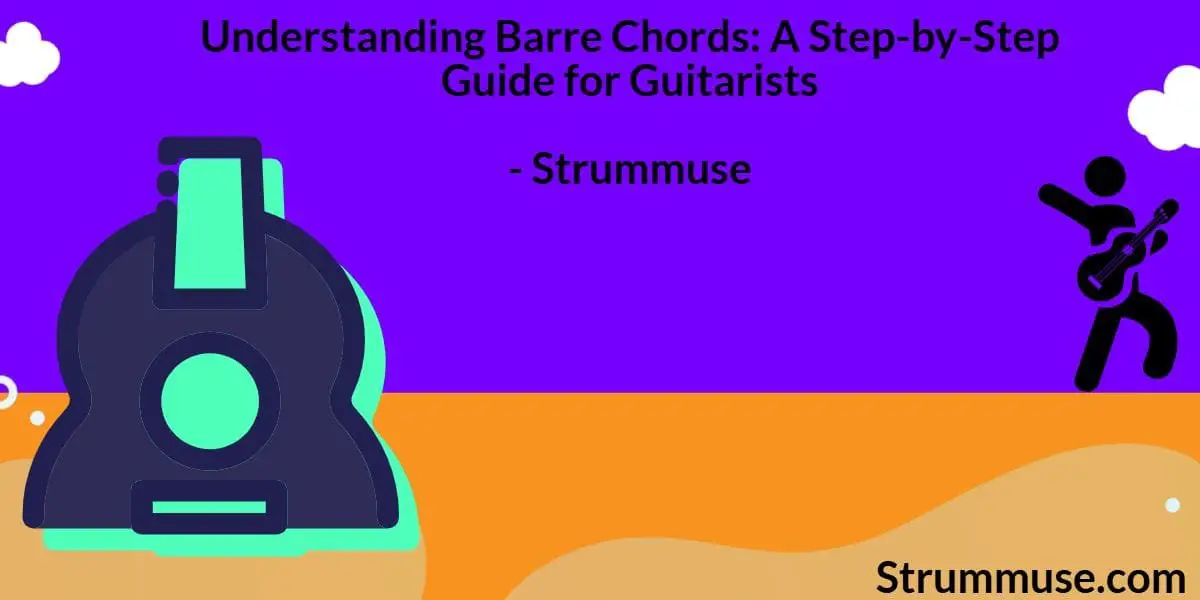Introduction
Barre chords are a fundamental part of learning the guitar. For beginners, they can seem daunting, but they’re essential for playing a wide range of songs across many genres. In this guide, we’ll take a step-by-step approach to understanding barre chords. From their basic structure to practical tips and common mistakes, this guide will help you become more confident in playing barre chords and incorporating them into your music.
By the end of this post, you’ll have a deeper understanding of barre chords, their uses, and how to master them with ease. Whether you’re a beginner or an intermediate player looking to improve, this guide is designed for all levels.
What are Barre Chords?
Definition and Explanation
A barre chord is a chord where one or more fingers press down multiple strings across a single fret, forming a “bar.” This technique allows guitarists to play chords that can be moved up and down the fretboard, giving them access to a wide variety of sounds.
Barre chords are often seen as a necessary skill for guitarists, as they provide flexibility and allow players to play a wider range of songs. Unlike open chords, which involve some strings being played open (without pressing down), barre chords involve pressing down all the strings for a full sound.
The Anatomy of a Barre Chord
Before we dive into playing barre chords, it’s important to understand their structure. A barre chord typically consists of two main components:
- The Barre: The “bar” is created by pressing down all the strings across a single fret with one finger, typically your index finger. This is the defining feature of barre chords and distinguishes them from other chords.
- Chord Shape: The rest of your fingers will form the rest of the chord shape. These shapes are similar to open chords (like E major or A major) but shifted along the fretboard using the index finger as a capo.
Step-by-Step Guide to Playing Barre Chords
Now that we’ve covered the basics, let’s move on to the practical side of playing barre chords. Follow this step-by-step guide, and with a little practice, you’ll soon be playing barre chords like a pro.
Step 1: Get Comfortable with Your Index Finger
The key to barre chords is your index finger. It will press down multiple strings across the fretboard. Start by practicing pressing your index finger down across all six strings at the 5th fret.
It may feel awkward at first, but don’t worry – with time and proper technique, it will become second nature. Make sure your index finger is as flat as possible, with minimal pressure, to avoid buzzing or muted notes.
Step 2: Master the E Major and E Minor Shapes
The next step is to learn the E major and E minor open chord shapes. These are the most common shapes used for barre chords. To practice:
- Play an E major chord in the open position (without barring).
- Move the shape up the fretboard while keeping the same finger positioning. You’ll notice that you’re essentially using your index finger to form a “capo” on the fretboard, while the other fingers remain in the same position.
Try this with both the E major and E minor shapes to get familiar with the motion.
Step 3: Apply the Barre
Once you’re comfortable with the shapes, it’s time to add the barre. Using your index finger, press down all the strings at the 5th fret, keeping your other fingers in the same positions for the E major or minor shape.
The key here is to use the right amount of pressure. Too much pressure will cause a harsh, muted sound, while too little pressure will result in buzzing. Practice slowly, focusing on getting a clean sound from each string.
Step 4: Move the Chord Shapes
After mastering the basic barre chord shapes, try moving them up and down the neck. Since these chords are movable, you can play them at different positions to create different chords. For example, if you move the E major shape up two frets, you’ll be playing an F major chord.
Practice shifting between the chords while maintaining the correct finger positioning and barring technique.
Step 5: Add More Chord Shapes
Once you’re comfortable with the basic shapes, it’s time to expand your chord vocabulary. You can apply the same barre chord concept to other open chord shapes, such as:
- A major shape
- D major shape
- C major shape
Each of these shapes can be moved up and down the fretboard, just like the E major and minor shapes.
Tips for Playing Barre Chords Effectively
- Proper Finger Placement: Ensure your index finger is placed as flat as possible across the fretboard, applying just enough pressure to produce a clear sound without buzzing. Keep your thumb at the back of the neck to help stabilize your grip.
- Don’t Rush: Barre chords take time to master. Start slow and focus on playing clean, individual notes before trying to play full chords.
- Strengthen Your Fingers: Playing barre chords requires finger strength. Incorporate finger exercises into your practice routine to help build strength and endurance.
- Keep Your Hands Relaxed: Tension can make it harder to play clean chords. Keep your hands relaxed and avoid squeezing the neck too hard.
- Use the Correct Thumb Placement: Your thumb should be positioned in the middle of the back of the guitar neck. This gives you better control over the fretboard and helps you avoid strain.
Common Mistakes to Avoid
When learning barre chords, there are a few common mistakes you should watch out for:
- Not Pressing Enough: If you don’t apply enough pressure with your index finger, the strings will sound muted or buzzing. Practice applying just the right amount of pressure.
- Incorrect Finger Positioning: Make sure your other fingers are positioned correctly to form the chord shape. If they’re too far away from the fretboard or pressing on the wrong strings, you’ll get a muddy sound.
- Not Using the Correct Fret Placement: Ensure that you place your index finger as close to the fret as possible, without going over it. This minimizes buzzing and creates a cleaner sound.
- Overstraining Your Hand: If you’re feeling excessive strain or tension in your hand, take a break and relax. Playing barre chords should not cause pain.
Advanced Barre Chord Techniques
Once you’ve mastered basic barre chords, there are plenty of ways to make your playing more expressive and advanced. Here are some tips for taking your barre chord technique to the next level:
- Add Extensions: Barre chords can include additional notes, such as 7th, 9th, or 13th chords. Learn how to incorporate these extensions to create more complex and jazzy sounds.
- Experiment with Fingerpicking: Instead of strumming your barre chords, try fingerpicking to create a more intricate sound. This technique is often used in folk and acoustic guitar playing.
- Slide Between Chords: Barre chords are great for sliding between chords. Try moving smoothly from one chord to another without lifting your fingers off the fretboard.
How Barre Chords Enhance Your Guitar Playing
Mastering barre chords is a game-changer for any guitarist. Once you’re comfortable with them, you’ll be able to play a wide range of songs, from rock and pop to jazz and blues. Barre chords allow you to:
- Play songs in different keys
- Switch between chords seamlessly
- Add musical variety to your playing
- Perform faster and with more fluidity
Conclusion
Barre chords may seem challenging at first, but with persistence, practice, and the right techniques, they’ll become an invaluable part of your guitar-playing toolkit. By following this step-by-step guide, you’ll be well on your way to mastering barre chords and unlocking a world of new possibilities on the guitar.
Author’s Note:
Thank you for taking the time to read this guide! As a guitarist myself, I understand the challenges that come with mastering barre chords, but trust me, the effort is worth it. Keep practicing, stay patient, and don’t hesitate to experiment with different chord shapes and positions. Remember, the more you practice, the better you’ll become.
Feel free to drop a comment below if you have any questions or need further clarification on any of the steps. Happy playing!


Thanks very interesting blog!